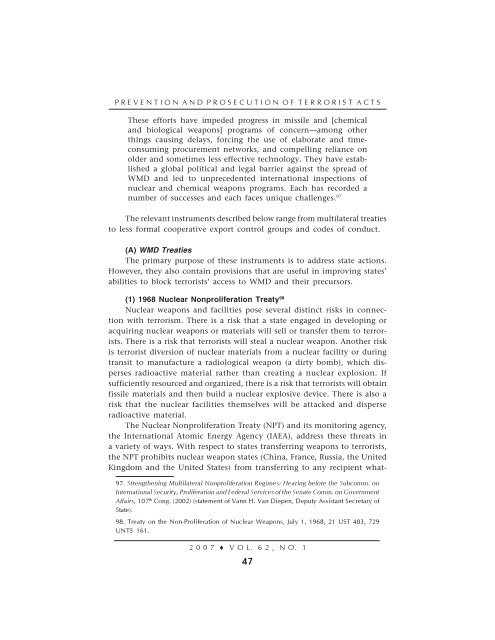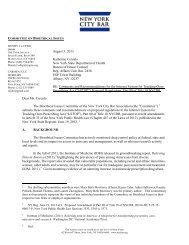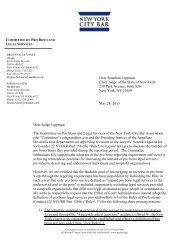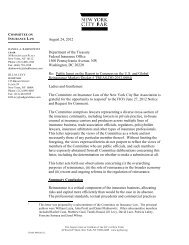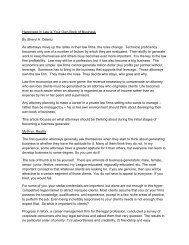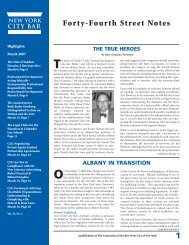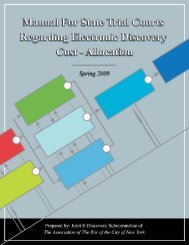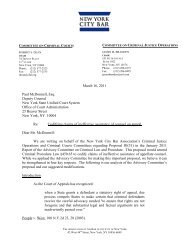2007 Issue 1 - New York City Bar Association
2007 Issue 1 - New York City Bar Association
2007 Issue 1 - New York City Bar Association
Create successful ePaper yourself
Turn your PDF publications into a flip-book with our unique Google optimized e-Paper software.
P R E V E N T I O N A N D P R O S E C U T I O N O F T E R R O R I S T A C T S<br />
These efforts have impeded progress in missile and [chemical<br />
and biological weapons] programs of concern—among other<br />
things causing delays, forcing the use of elaborate and timeconsuming<br />
procurement networks, and compelling reliance on<br />
older and sometimes less effective technology. They have established<br />
a global political and legal barrier against the spread of<br />
WMD and led to unprecedented international inspections of<br />
nuclear and chemical weapons programs. Each has recorded a<br />
number of successes and each faces unique challenges. 97<br />
The relevant instruments described below range from multilateral treaties<br />
to less formal cooperative export control groups and codes of conduct.<br />
(A) WMD Treaties<br />
The primary purpose of these instruments is to address state actions.<br />
However, they also contain provisions that are useful in improving states’<br />
abilities to block terrorists’ access to WMD and their precursors.<br />
(1) 1968 Nuclear Nonproliferation Treaty 98<br />
Nuclear weapons and facilities pose several distinct risks in connection<br />
with terrorism. There is a risk that a state engaged in developing or<br />
acquiring nuclear weapons or materials will sell or transfer them to terrorists.<br />
There is a risk that terrorists will steal a nuclear weapon. Another risk<br />
is terrorist diversion of nuclear materials from a nuclear facility or during<br />
transit to manufacture a radiological weapon (a dirty bomb), which disperses<br />
radioactive material rather than creating a nuclear explosion. If<br />
sufficiently resourced and organized, there is a risk that terrorists will obtain<br />
fissile materials and then build a nuclear explosive device. There is also a<br />
risk that the nuclear facilities themselves will be attacked and disperse<br />
radioactive material.<br />
The Nuclear Nonproliferation Treaty (NPT) and its monitoring agency,<br />
the International Atomic Energy Agency (IAEA), address these threats in<br />
a variety of ways. With respect to states transferring weapons to terrorists,<br />
the NPT prohibits nuclear weapon states (China, France, Russia, the United<br />
Kingdom and the United States) from transferring to any recipient what-<br />
97. Strengthening Multilateral Nonproliferation Regimes: Hearing before the Subcomm. on<br />
International Security, Proliferation and Federal Services of the Senate Comm. on Government<br />
Affairs, 107 th Cong. (2002) (statement of Vann H. Van Diepen, Deputy Assistant Secretary of<br />
State).<br />
98. Treaty on the Non-Proliferation of Nuclear Weapons, July 1, 1968, 21 UST 483, 729<br />
UNTS 161.<br />
2 0 0 7 V O L. 6 2 , N O. 1<br />
47


